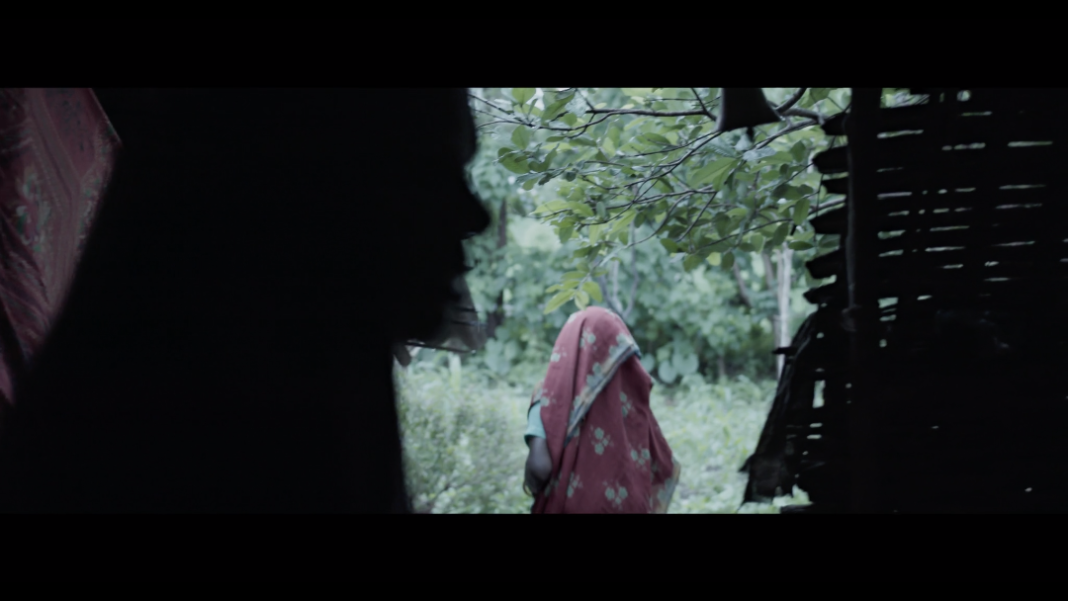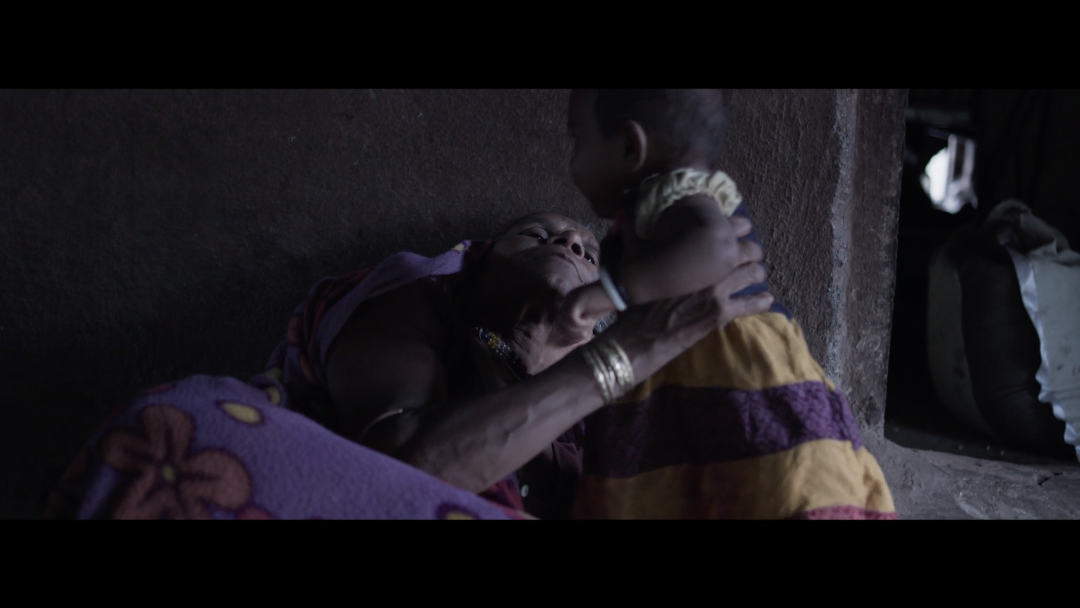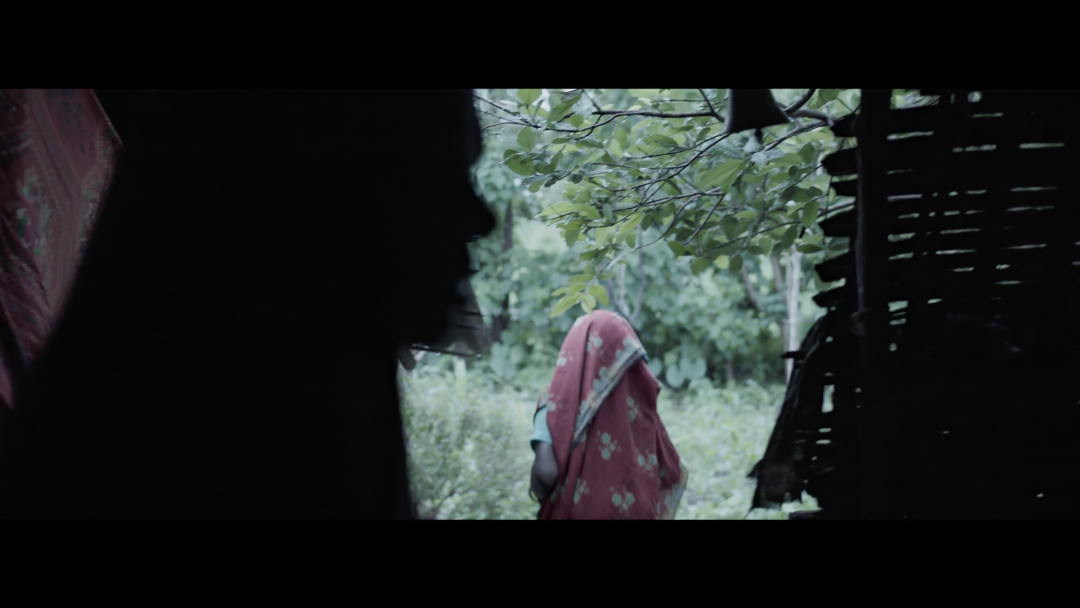Film-maker Sachin Dheeraj Mudigonda focuses on the persecution of a woman in an Indian village in the short TESTIMONY OF ANA.
Film And TV Now spoke with the film-maker about the short film.
FILM AND TV NOW: How would you describe the genre specifics of this story, as it is rare in a short that a character’s own reflection is so horrifying to hear, but there are no explicit visuals on show?
SACHIN DHEERAJ MUDIGONDA: I really do not know what genre this story belongs to — I think the film is very much driven by Ana’s voice. Is “honesty” a genre?
FTVN: The film is dedicated to Anaben Pawar. When did you first learn of her story?
SDM: Ten years back, during my undergraduate studies in Gujarat, I first came across the term “Witch-Hunting.” I read that “a mob killed an old woman for feasting on people’s souls” in a local newspaper.
I was probably too young at that time to conceive what I read. However that story etched itself at the back of my mind. Almost seven years later, I again came across an article about “Witch-Hunting.” But this time, I wanted to do something about it. Especially after all the film-making resources that I knew I had at my disposal.
So I decided to go to Gujarat again to do some fieldwork. There I met with some journalists and social justice lawyers who got me in touch with Ana, one of the only few survivors of “Witch-Hunt” attacks in rural Gujarat.
FTVN: How many ‘Bhagats’ (witch hunters) are there in existence?
SDM: I believe there’s at least one Bhagat in every three villages — at least in the area I visited. And there are around 150 villages in the region I investigated.
FTVN: The weather plays an integral part of the short and is intense at times. Tell us about the logistics of shooting in the climate where the story takes place?
SDM: Yes we were there when it was a peak monsoon season. All we had was one umbrella above our camera and rolled with it.
FTVN: Tell us about the village.
SDM: The village was very much hostile to us — as it was to Ana. So we had to plan our shoot when all the men in the village were away for farming during the day time. Somehow managed to capture Ana’s story and leave without any conflict.
FTVN: Tell us about your production team.
SDM: My wife was a co-producer who helped me connect with some lawyers & journalists and stood as a pillar of support. Then I reached out to Rohin & Nilesh, both graduates from FTII, to come on board as cinematographer and sound recordist respectively.
Alpesh was Rohin’s friend who assisted him with camera. All three of them became very dear friends to me later on. Then there was Roshan bhai, a social justice lawyer, who was our line producer and played an instrumental role in providing us with translators and production assistants.
FTVN: How long did it take to shoot the film?
SDM: I was there for a month and a half. But we only shot the film for 14 days.
FTVN: We learn of four key supporters in the end credits. Tell us about their specific contributions in getting your short made.
SDM: Three of them were scholarships granted to me through my film school — The University of Texas at Austin. All three of them contributed heavily towards my production phase. The final grant I got was from Austin Film Society which really helped me with festival phase.
FTVN: Tell us about the Austin Film Society Grant and how this facility helps film-makers like yourself in other ways?
SDM: AFS Grant is a grant that’s geared to help film-makers living in and around Austin. I just cannot thank them enough for their generous support. Apart from helping film-makers financially. AFS also acts as a film school itself. Offering film-making courses to public and screening important films are just a few of the many gracious things that the facility does.
FTVN: This is as contrasting a short from the traditional Bollywood model that we associate India with. How difficult is it for Indian film-makers to make shorts that have a different perspective than those we see in the most prolific film industry in the world?
SDM: I can’t speak for everyone as I’m just beginning to make films as a film student in the USA. I would have to really live in India for a few years to answer your question.
FTVN: Diversity and gender are big issues in the creative arts at the moment. What progress do you feel has been made on both fronts?
SDM: I think there has been some great progress. Recently, Chloe Zhao won Best Director — which I think is a much awaited moment to cherish. It’s also refreshing to see a lot of under-represented voices being represented in our contemporary world.
FTVN: What issues and themes are you keen to explore in your future works?
SDM: Climate change, community resilience and Indian classical art forms are some of the topics that I’m keen on investigating.
FTVN: How has the global situation affected your development and evolution as a film-maker?
SDM: It’s very disheartening to see the current situation in India. I just hope the world becomes normal again to make films safely.
FTVN: Finally, what are you most proud of about the short?
SDM: I think it is the reason of making this short that I’m really proud of. The fact that I was able to preserve Ana’s memory and trauma through film as not only to present to people the evidence of what happened to Ana but to revive among generations to come to the memory of her resistance that today is in danger of being erased. Preserving this memory is essential.































